
A mammoth is any species of the extinct elephantid genus Mammuthus. They lived from the late Miocene epoch into the Holocene about 4,000 years ago, and various species existed in Africa, Europe, Asia, and North America. Mammoths are distinguished from living elephants by their spirally twisted tusks and in at least some later species, the development of numerous adaptions to living in cold environments, including a thick layer of fur.
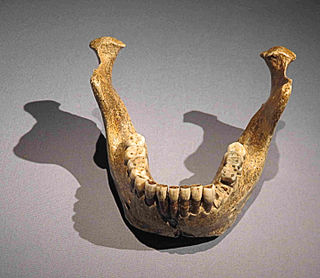
Homo heidelbergensis is an extinct species or subspecies of archaic human which existed during the Middle Pleistocene. It was subsumed as a subspecies of H. erectus in 1950 as H. e. heidelbergensis, but towards the end of the century, it was more widely classified as its own species. It is debated whether or not to constrain H. heidelbergensis to only Europe or to also include African and Asian specimens, and this is further confounded by the type specimen being a jawbone, because jawbones feature few diagnostic traits and are generally missing among Middle Pleistocene specimens. Thus, it is debated if some of these specimens could be split off into their own species or a subspecies of H. erectus. Because the classification is so disputed, the Middle Pleistocene is often called the "muddle in the middle".
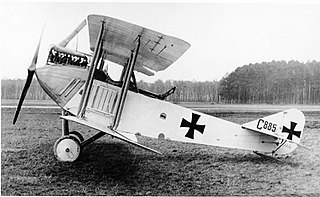
The AEG C.II was a German two-seat biplane reconnaissance aircraft produced in small numbers from October 1915. It was a slightly smaller version of the C.I with better performance, redesigned cockpit for both pilot and observer/bombardier, new rear mounting for a 7.92 mm (.312 in) Parabellum MG14 machine gun, and the ability to carry four 10 kg (22 lb) bombs for light attack duties.

The AEG C.III was a two-seat biplane reconnaissance aircraft, a single prototype of which was built during World War I. The aircraft featured an unusual fuselage design that completely filled the gap between the upper and lower sets of wings, to provide the pilot with improved vision, and to allow the observer a wider field of fire for his 7.92 mm (.312 in) machine gun. The pilot sat to the rear of the observer, who was stationed over the upper wing. This design was not as successful as had been hoped, and the C.III was never entered into service. Despite being heavier than the C.II, its maximum speed increased to 158 km/h (98 mph).

Mount Takahe is a 3,460-metre-high (11,350 ft) snow-covered shield volcano in Marie Byrd Land, Antarctica, 200 kilometres (120 mi) from the Amundsen Sea. It is a c. 30-kilometre-wide (19 mi) mountain with parasitic vents and a caldera up to 8 kilometres (5 mi) wide. Most of the volcano is formed by trachytic lava flows, but hyaloclastite is also found. Snow, ice, and glaciers cover most of Mount Takahe. With a volume of 780 km3 (200 cu mi), it is a massive volcano; the parts of the edifice that are buried underneath the West Antarctic Ice Sheet are probably even larger. It is part of the West Antarctic Rift System along with 18 other known volcanoes.

Yuanmou Man is a subspecies of H. erectus which inhabited the Yuanmou Basin in Yunnan Province, southwestern China, roughly 1.7 million years ago. It is the first fossil evidence of humans in China, though they probably reached the region by at least 2 million years ago. Yuanmou Man is known only from two upper first incisors presumed to have belonged to a male, and a partial tibia presumed to have belonged to a female. The female may have stood about 123.6–130.4 cm in life. These remains are anatomically quite similar to those contemporary early Homo in Africa, namely H. habilis and H. (e?) ergaster.

The AGO C.I was a First World War German pusher reconnaissance biplane that used a pod-and-boom configuration.

The AGO C.II was a German reconnaissance biplane of World War I. It was essentially a slightly redesigned version of the manufacturer's C.I design with a more powerful engine and 3-bay wings.

The AGO C.VIII was a German reconnaissance aircraft built by AGO Flugzeugwerke during World War I.

The LFG Roland C.II, usually known as the Walfisch (Whale), was an advanced German reconnaissance aircraft of World War I. It was manufactured by Luft-Fahrzeug-Gesellschaft G.m.b.H.

The Hannover CL.III was a German military aircraft of World War I. It was a two-seat multi-role aircraft, primarily used as a ground attack machine. Like the other Hannover "light-C-class", or "CL" designated aircraft designed by Hermann Dorner, it included an unusual biplane tail, allowing for a greater firing arc for the tail gunner. Until the introduction of the aircraft, such tails had only been used on larger aircraft.

Entering service in 1915, the Rumpler C.I,, two-seater single-engine reconnaissance biplane, was one of the first German C-type aircraft, and also one of the longest serving in its class during World War I, being retired from the last front line units only in early 1918.
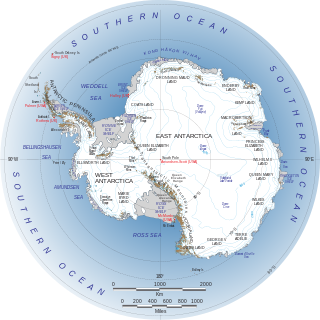
The East Antarctic Ice Sheet (EAIS) lies between 45° west and 168° east longitudinally. It was first formed around 34 million years ago, and it is the largest ice sheet on the entire planet, with far greater volume than the Greenland ice sheet or the West Antarctic Ice Sheet (WAIS), from which it is separated by the Transantarctic Mountains. The ice sheet is around 2.2 km (1.4 mi) thick on average and is 4,897 m (16,066 ft) at its thickest point. It is also home to the geographic South Pole, South Magnetic Pole and the Amundsen–Scott South Pole Station.

The Ago Ao 192 Kurier (Courier) was a small German twin-engined aircraft designed and built by AGO Flugzeugwerke in the 1930s. A small production run of six aircraft followed three prototypes, these being used as transports.

The Horten H.III is a flying wing sailplane built by Walter and Reimar Horten in Germany from 1937 to 1944.
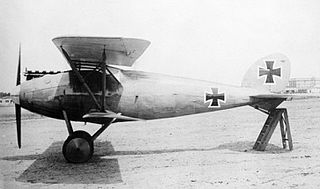
The Albatros C.XIII was a German two-seat, single-engine, biplane light fighter aircraft built in 1917. Only one was constructed.
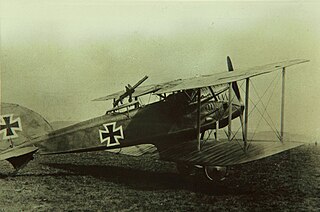
The Halberstadt C.III was a German single-engined reconnaissance biplane of World War I, built by Halberstädter Flugzeugwerke.

The Sablatnig C.III was a monoplane C-type reconnaissance two-seater aircraft developed and built by Sablatnig in Berlin, Germany, in 1918.
The LVG D.IV was a German fighter plane built by LVG in World War I.
The LFG Roland C.VIII was a German reconnaissance aircraft of World War I. It was manufactured by Luft-Fahrzeug-Gesellschaft G.m.b.H.



















